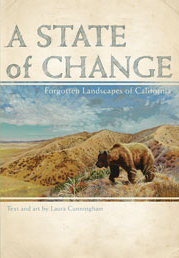| About Us | Contact Us | Calendar | Publish | RSS |
|---|
|
Features • latest news • best of news • syndication • commentary Feature Categories IMC Network:
Original Citieswww.indymedia.org africa: ambazonia canarias estrecho / madiaq kenya nigeria south africa canada: hamilton london, ontario maritimes montreal ontario ottawa quebec thunder bay vancouver victoria windsor winnipeg east asia: burma jakarta japan korea manila qc europe: abruzzo alacant andorra antwerpen armenia athens austria barcelona belarus belgium belgrade bristol brussels bulgaria calabria croatia cyprus emilia-romagna estrecho / madiaq euskal herria galiza germany grenoble hungary ireland istanbul italy la plana liege liguria lille linksunten lombardia london madrid malta marseille nantes napoli netherlands nice northern england norway oost-vlaanderen paris/Île-de-france patras piemonte poland portugal roma romania russia saint-petersburg scotland sverige switzerland thessaloniki torun toscana toulouse ukraine united kingdom valencia latin america: argentina bolivia chiapas chile chile sur cmi brasil colombia ecuador mexico peru puerto rico qollasuyu rosario santiago tijuana uruguay valparaiso venezuela venezuela oceania: adelaide aotearoa brisbane burma darwin jakarta manila melbourne perth qc sydney south asia: india mumbai united states: arizona arkansas asheville atlanta austin baltimore big muddy binghamton boston buffalo charlottesville chicago cleveland colorado columbus dc hawaii houston hudson mohawk kansas city la madison maine miami michigan milwaukee minneapolis/st. paul new hampshire new jersey new mexico new orleans north carolina north texas nyc oklahoma philadelphia pittsburgh portland richmond rochester rogue valley saint louis san diego san francisco san francisco bay area santa barbara santa cruz, ca sarasota seattle tampa bay tennessee urbana-champaign vermont western mass worcester west asia: armenia beirut israel palestine process: fbi/legal updates mailing lists process & imc docs tech volunteer projects: print radio satellite tv video regions: oceania united states topics: biotechSurviving Citieswww.indymedia.org africa: canada: quebec east asia: japan europe: athens barcelona belgium bristol brussels cyprus germany grenoble ireland istanbul lille linksunten nantes netherlands norway portugal united kingdom latin america: argentina cmi brasil rosario oceania: aotearoa united states: austin big muddy binghamton boston chicago columbus la michigan nyc portland rochester saint louis san diego san francisco bay area santa cruz, ca tennessee urbana-champaign worcester west asia: palestine process: fbi/legal updates process & imc docs projects: radio satellite tv |
production:
archives by date |
single feature archives |
weekly archives
On March 26th, "Our Communities, Our Jobs" the largest worker solidarity march, probably, in Los Angeles history, brought together all of L.A. labor, ranging from big unions like SEIU, Teamsters, UFCW, CWA, and Carpenters, to the smaller organizations like the numerous construction unions, Hollywood unions, firefighters, the IWW, worker organizations, community organizations, and unaffiliated allies. The march went from the convention center to Pershing Square, and stopped at a hotel to support UNITE-HERE organizing there, stopped at a T-Mobile shop to support CWA organizing T-Mobile, stopped at Ralphs to tell the supermarkets to negotiate with UFCW, and stopped at Chase to highlight the causes of this lousy economy. Estimates on size vary from 10,000 (initial LAPD estimate repeated by LA Times) to 30,000. (Current LAPD estimate is 20k to 25k.) (Photo at left by David Sachs) Photos: Photos by Tim H-M, Photos by Slobodan Dimitrov, Photos by David Sachs, Photos by Chris Valle, Photos by joiseyboyy Videos: Kids Protest Cuts at Labor Rally From the newswire: Downtown March for Workers' Rights by Rockero For her book, Cunningham spent over 20 years illustrating how California might have looked before the arrival of Europeans. Her artwork often goes back centuries and even millennia (and on a few occasions all the way to the ice age).
Among her illustrations is a striking view of the San Fernando Valley (as seen on the book cover), not too long ago with a grizzly bear in the foothills of the San Gabriel Mountains overlooking uncorrupted land. Another local scene by Cunningham shows San Bernardino with 15-foot-tall sun flowers. These plants were thought to be extinct since 1937, but recently some were found near LA. In "State of Change," this awe-inspiring painting is juxtaposed with a modern freeway on-ramp. While researching the book, she studied protected areas but said she also learned from studying abandoned lots and their native grasses. Nineteenth-century art was another source of reference, as was accounts by early Euro-Americans. Cunningham also consulted indigenous elders and sometimes learned things that were contrary to what anthropologists and other scientists had stated. She seems to agree with M. Kat Anderson, author of Tending the Wild, about the critical role Native Americans could have in restoring ecosystems. One problem, though, is that indigenous people tend to be more long-term in their approaches, whereas the Federal Government tends to think in terms of months rather than centuries. Nevertheless, she is aware of cases where the government was swayed toward the long-term. This gives her hope for the future. Story and photos: Author/artist/scientist Laura Cunningham on "Forgotten Landscapes of California" by R. Plesset production: archives by date | single feature archives | weekly archives |



 March 26 Labor Solidarity March Photos
March 26 Labor Solidarity March Photos Laura Cunningham on "Forgotten Landscapes of California"
Laura Cunningham on "Forgotten Landscapes of California"